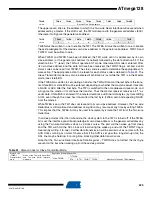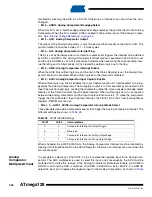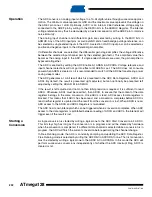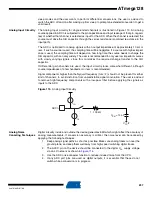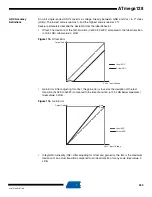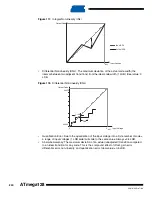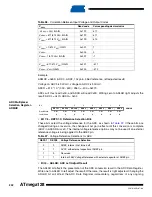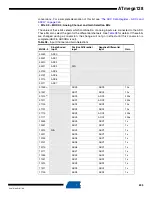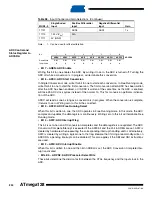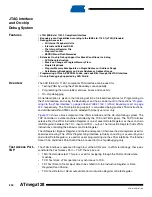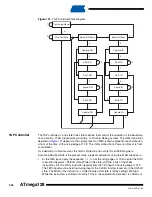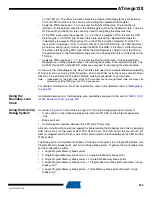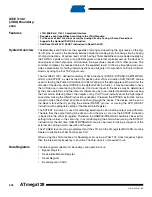
237
2467S–AVR–07/09
ATmega128
sleep modes and the user wants to perform differential conversions, the user is advised to
switch the ADC off and on after waking up from sleep to prompt an extended conversion to get a
valid result.
Analog Input Circuitry
The Analog Input circuitry for single ended channels is illustrated in Figure 113. An analog
source applied to ADCn is subjected to the pin capacitance and input leakage of that pin, regard-
less of whether that channel is selected as input for the ADC. When the channel is selected, the
source must drive the S/H capacitor through the series resistance (combined resistance in the
input path).
The ADC is optimized for analog signals with an output impedance of approximately 10 k
Ω
or
less. If such a source is used, the sampling time will be negligible. If a source with higher imped-
ance is used, the sampling time will depend on how long time the source needs to charge the
S/H capacitor, with can vary widely. The user is recommended to only use low impedant sources
with slowly varying signals, since this minimizes the required charge transfer to the S/H
capacitor.
If differential gain channels are used, the input circuitry looks somewhat different, although
source impedances of a few hundred k
Ω
or less is recommended.
Signal components higher than the Nyquist frequency (f
ADC
/ 2) should not be present for either
kind of channels, to avoid distortion from unpredictable signal convolution. The user is advised
to remove high frequency components with a low-pass filter before applying the signals as
inputs to the ADC.
Figure 113.
Analog Input Circuitry
Analog Noise
Canceling Techniques
Digital circuitry inside and outside the device generates EMI which might affect the accuracy of
analog measurements. If conversion accuracy is critical, the noise level can be reduced by
applying the following techniques:
1.
Keep analog signal paths as short as possible. Make sure analog tracks run over the
ground plane, and keep them well away from high-speed switching digital tracks.
2.
The AVCC pin on the device should be connected to the digital V
CC
supply voltage
via an LC network as shown in
3.
Use the ADC noise canceler function to reduce induced noise from the CPU.
4.
If any ADC port pins are used as digital outputs, it is essential that these do not
switch while a conversion is in progress.
ADCn
I
IH
1..100 k
Ω
C
S/H
= 14 pF
V
CC
/2
I
IL
Содержание ATmega128
Страница 384: ...vi 2467S AVR 07 09 ATmega128 Rev 2467C 02 02 377 Table of Contents i...
Страница 385: ...vii 2467S AVR 07 09 ATmega128...

